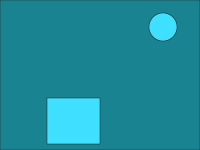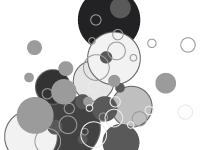Next, the “Principles of Design”
The “principles of design” are mechanisms of arrangement and organization for the various elements of design in artwork. Please note that different sources might list slightly different versions of the “Principles of Design,” but the core fundamentals are essentially the same.
Harmony
Harmony in art and design is the visually satisfying effect of combining similar, related elements. For instance: adjacent colors on the color wheel, similar shapes etc.
Balance
A feeling of equality in weight, attention, or attraction of the various visual elements within the pictorial field as a means of accomplishing organic unity.
There are a few types of balance:
- Symmetry: A form of balance achieved by the use of identical balance compositional units on either side of a vertical axis within the picture plane.
- Approximate Symmetry: A form of balance achieved by the use of similarly balanced compositional units on either side of a vertical axis within the picture plane.
- Radial Symmetry: A form of balance than is even, radiating out from a central points to all four quadrants of the shape’s constraining plane.
- Asymmetry: A form of balance attained when the visual units on balance either side of a vertical axis are not identical but are placed in positions within the picture plane so as to create a “felt” equilibrium of the total form concept.
Proportion
Proportion is the comparison of dimensions or distribution of forms. It is the relationship in scale between one element and another, or between a whole object and one of its parts. Differing proportions within a composition can relate to different kinds of balance or symmetry, and can help establish visual weight and depth.
Dominance/Emphasis
The principle of visual organization that suggests that certain elements should assume more importance than others in the same composition. It contributes to organic unity by emphasizing the fact that there is one main feature and that other elements are subordinate to it. In the below examples, notice how the smaller elements seem to recede into the background while the larger elements come to the front. Pay attention to both scale and value of the objects that recede and advance.
Variety
Variety is the complement to unity and harmony, and is needed to create visual interest. Without unity and harmony, an image is chaotic and “unreadable;” without variety it is dull and uninteresting. Good design is achieved through the balance of unity and variety; the elements need to be alike enough so we perceive them as belonging together and different enough to be interesting.
Movement
Movement is the path our eyes follow when we look at a work of art, and it is generally very important to keep a viewer’s eyes engaged in the work. Without movement, artwork becomes stagnant. A few good strategies to evoke a sense of movement (among many others) are using diagonal lines, placing shapes so that the extend beyond the boundaries of the picture plane, and using changing values.
Rhythm
A continuance, a flow, or a feeling of movement achieved by the repetition of regulated visual information.












